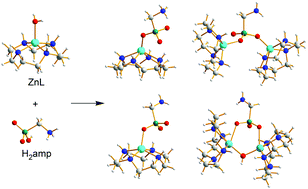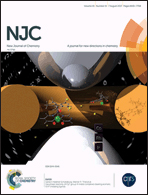Interaction of the Zn(ii)–cyclen complex with aminomethylphosphonic acid: original simultaneous potentiometric and 31P NMR data treatment†
Abstract
The interaction of aminomethylphosphonic acid (H2amp) with the Zn(II)–cyclen complex and the formation of ternary complexes was studied by potentiometry and 31P NMR titrations. Data evaluation of each of the methods separately was found to be insufficient. Thus, data obtained from the both methods were simultaneously treated with the computer program OPIUM. The determined stability constants indicated only weak (log K ∼ 3) coordination of aminomethylphosphonic acid through the phosphonate group. The chelating coordination mode with the participation of the amine group was not confirmed. In excess of Zn(II)–cyclen, the formation of dinuclear complexes, in which two Zn(II)–cyclen units are bridged by a phosphonate group, was observed and their presence was confirmed by mass spectrometry. Such a coordination motif is typical for phosphonates in the solid state and also for phosphatases.



 Please wait while we load your content...
Please wait while we load your content...